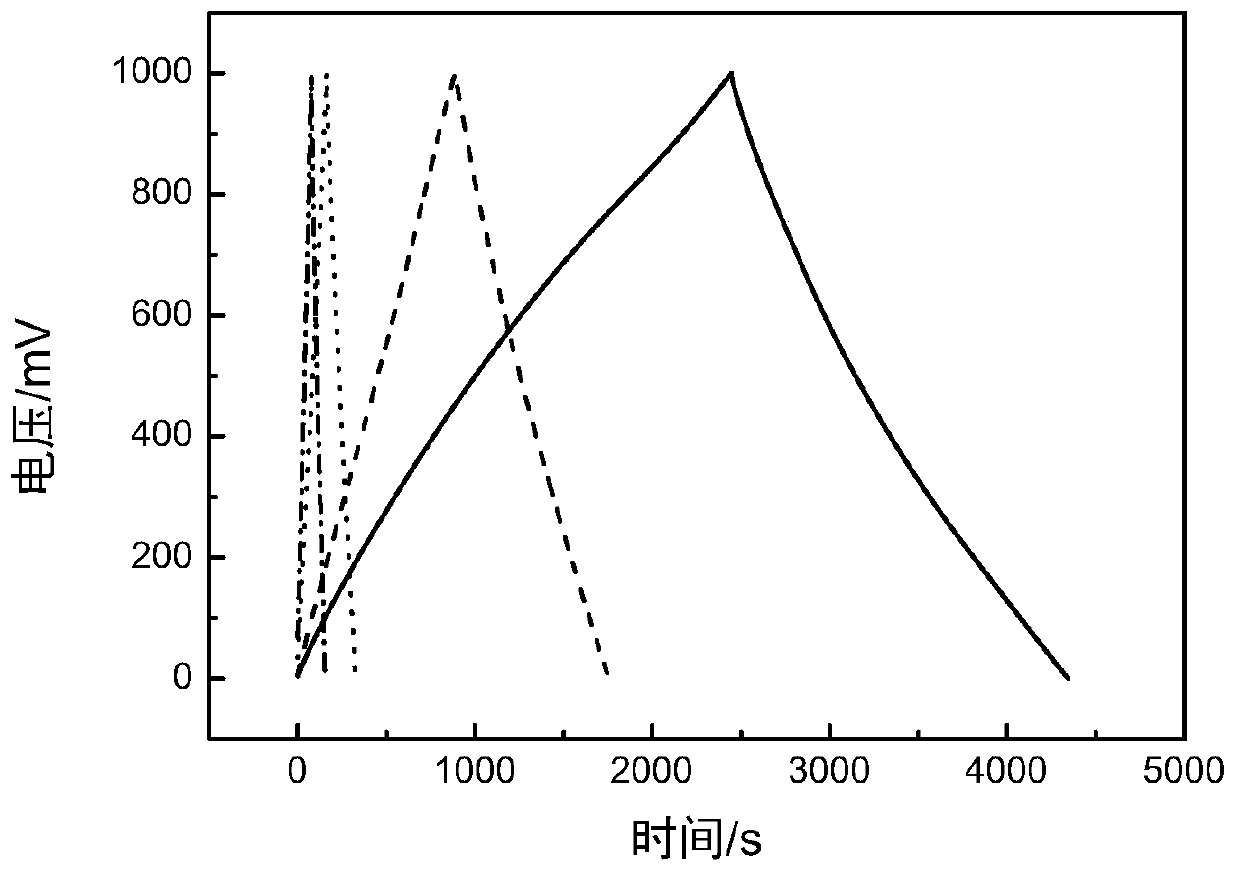Biomass-based colloidal electrolyte and biomass-based colloidal electrolyte supercapacitor
A colloidal electrolyte and supercapacitor technology, which is applied in the manufacture of hybrid/electric double-layer capacitors, hybrid capacitor electrolytes, etc., can solve the problems of complicated preparation process and increased cost, and achieve the effects of simple operation, cost saving and high power density.
- Summary
- Abstract
- Description
- Claims
- Application Information
AI Technical Summary
Problems solved by technology
Method used
Image
Examples
Embodiment 1
[0038] Weigh 3g of sea stone cauliflower and rinse it repeatedly with deionized water, then soak it in deionized water for 2 hours, put it into 300ml of deionized water and heat until the water boils, continue heating for 2 hours, sea stone cauliflower dissolves, and then filter the remaining waste residue Lose. Boil with low heat for 3 hours, evaporate excess water, stop heating, and pour in the prepared KOH electrolyte until the solution is not completely cooled to form sea stone cauliflower-KOH sol (the mass percentage of sea stone cauliflower sol About 30%, the concentration of KOH is 6mol / L).
[0039] Mix activated carbon, conductive carbon black and polytetrafluoroethylene binder uniformly according to the mass ratio of 85:10:5, stir well and repeatedly extrude until the emulsification is broken to obtain a plastic mixture. The resulting mixture was rolled into a film. The dried electrode membrane is cut, and then pressed onto the current collector foamed nickel to obt...
Embodiment 2
[0042] Weigh 3g of sea stone cauliflower and rinse it repeatedly with deionized water, then soak it in deionized water for 2 hours, put it into 500ml of deionized water and heat until the water boils, continue heating for 2 hours, sea stone cauliflower dissolves, and then filter the remaining waste residue Lose. Boil for 4 hours on low heat, evaporate the excess water, stop heating, and pour the prepared Na solution until the solution is not completely cooled. 2 SO 4 Electrolyte, forming sea stone cauliflower-Na 2 SO 4 Sol (wherein the mass percentage composition of seastone cauliflower sol is about 20%, Na 2 SO 4 The concentration is 1mol / L).
[0043] Mix activated carbon, conductive carbon black and polytetrafluoroethylene binder uniformly according to the mass ratio of 85:10:5, stir well and repeatedly extrude until the emulsification is broken to obtain a plastic mixture. The resulting mixture was rolled into a film. The dried electrode membrane is cut, and then pre...
Embodiment 3
[0046] Weigh 10g of sea stone cauliflower and rinse it repeatedly with deionized water, then soak it in deionized water for 2 hours, put it into 800ml of deionized water and heat until the water boils, continue heating for 3 hours, sea stone cauliflower dissolves, and then filter the remaining waste residue Lose. Boil for 6 hours on low heat, evaporate excess water, stop heating, and pour in the prepared K until the solution is not completely cooled. 4 Fe(CN) 6 Electrolyte to form Seastone Cauliflower-K 4 Fe(CN) 6 Sol (wherein the mass percent composition of seastone cauliflower sol is about 50%, K 4 Fe(CN) 6 The concentration is 0.1mol / L).
[0047] Mix activated carbon, conductive carbon black and polytetrafluoroethylene binder uniformly according to the mass ratio of 85:10:5, stir well and repeatedly extrude until the emulsification is broken to obtain a plastic mixture. The resulting mixture was rolled into a film. After the diaphragm is dried, it is cut, and then th...
PUM
 Login to View More
Login to View More Abstract
Description
Claims
Application Information
 Login to View More
Login to View More - R&D
- Intellectual Property
- Life Sciences
- Materials
- Tech Scout
- Unparalleled Data Quality
- Higher Quality Content
- 60% Fewer Hallucinations
Browse by: Latest US Patents, China's latest patents, Technical Efficacy Thesaurus, Application Domain, Technology Topic, Popular Technical Reports.
© 2025 PatSnap. All rights reserved.Legal|Privacy policy|Modern Slavery Act Transparency Statement|Sitemap|About US| Contact US: help@patsnap.com



